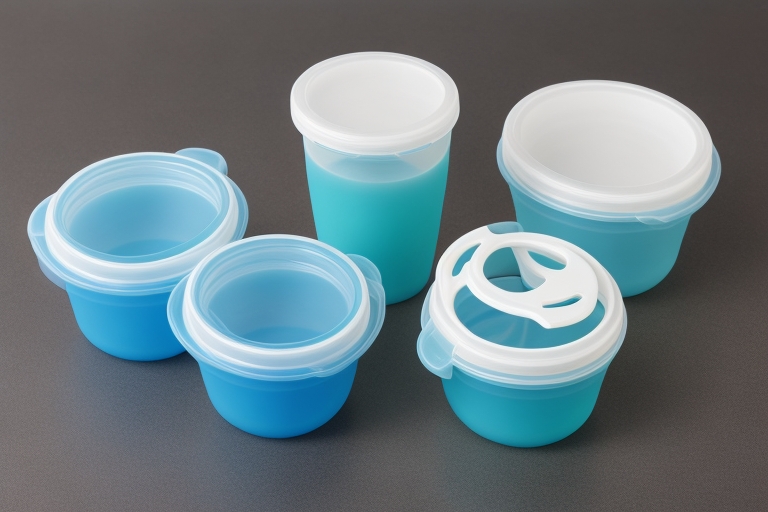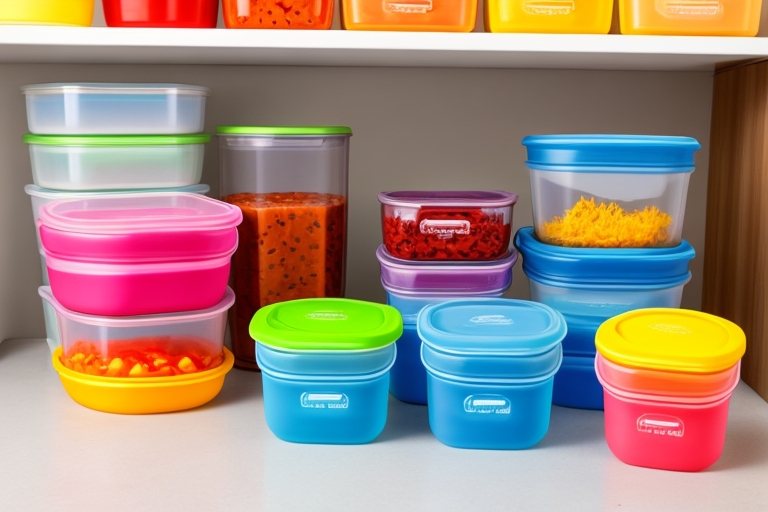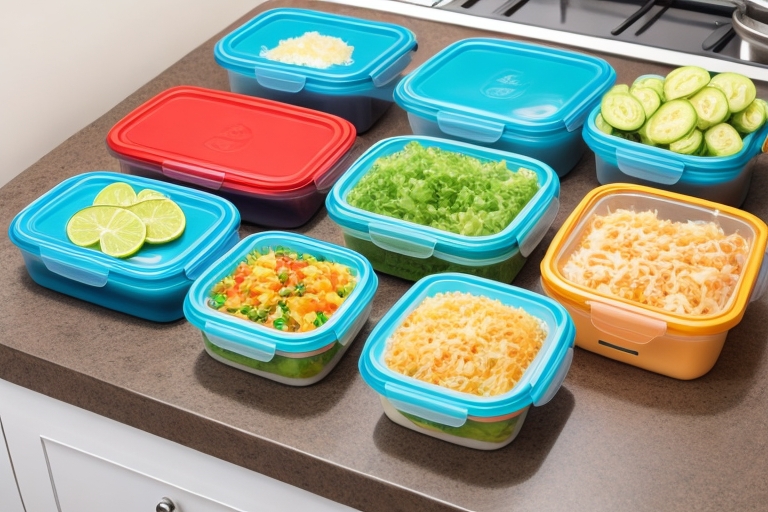
Silicone food storage containers have become a hot commodity in kitchens around the world, gaining popularity for their versatility, durability, and eco-friendly nature. As more people prioritize sustainability and practicality in their daily lives, these containers have emerged as a viable alternative to traditional plastic or glass options.
In the realm of food safety, the importance of reliable storage cannot be overstated. Improper storage can lead to spoilage, contamination, and ultimately compromise the safety of the food we consume. With the growing awareness of the impact of food choices on our well-being, individuals are seeking solutions that not only preserve the freshness of their meals but also align with their health-conscious and environmentally friendly values.
This blog post aims to delve into the safety aspects of silicone food storage containers. Are they a trustworthy option for keeping our food secure, or do they come with concerns that need to be addressed? Join me as we explore the ins and outs of silicone food storage containers to make informed choices about the products we use in our kitchens.
What Are Silicone Food Storage Containers?
Silicone food storage containers are a modern and flexible alternative to traditional plastic or glass containers for storing and preserving food. They are made from a synthetic material called silicone, which is derived from silica, a common component of sand. Silicone is known for its durability, heat resistance, and non-toxic properties, making it a popular choice for various kitchenware, including food storage containers.
These containers typically come in a variety of shapes and sizes, ranging from collapsible options for convenient storage to rigid containers with airtight seals to keep food fresh. Silicone is inherently non-reactive, meaning it doesn’t leach harmful chemicals into the stored food, making it a safe option for both cold and hot items.
One of the key advantages of silicone food storage containers is their flexibility. They can be easily folded or collapsed when empty, saving valuable space in your kitchen cabinets. Additionally, silicone is dishwasher-safe, microwave-safe, and often oven-safe, providing versatility for different food storage and preparation needs.
Silicone food storage containers are a modern and practical solution for those looking to move away from traditional materials. Their durability, non-toxic nature, and flexibility make them a popular choice for individuals seeking reliable and eco-friendly options in their kitchen.
Safety of Silicone Food Storage Containers

Concerns about the safety of silicone food storage containers are not uncommon, but understanding the material’s properties can help alleviate these worries.
Firstly, it’s important to note that silicone is generally regarded as safe by the U.S. Food and Drug Administration (FDA). The FDA has approved certain types of silicone for food contact, giving consumers confidence in the material’s suitability for storing food.
Silicone used in food storage containers is often labeled as food-grade, indicating that it meets specific standards for safety and purity. This certification ensures that the silicone undergoes rigorous testing and adheres to strict guidelines set by regulatory authorities.
Unlike some plastics, silicone is free from harmful chemicals such as BPA (Bisphenol A), phthalates, and lead. These substances, often found in traditional plastic containers, have raised health concerns due to their potential to leach into food and cause adverse effects.
Silicone’s non-toxic nature is a key attribute, as it does not release any harmful compounds when in contact with food. Its inertness means that it remains stable and does not react with the substances it comes into contact with, preventing any leaching or contamination.
Silicone food storage containers have undergone scrutiny to ensure their safety for storing food. FDA approval, food-grade certification, and the absence of harmful chemicals make silicone a reliable and secure choice for those seeking a healthier and more sustainable alternative to traditional food storage materials.
Is Silicone Safe for Food Storage?
Yes, silicone is generally considered safe for food storage. It has gained popularity as a safe and versatile material for various kitchen products, including food storage containers. Here are several reasons why silicone is deemed safe for food storage:
- FDA Approval: Silicone used in food-related applications, including food storage containers, is often FDA-approved. This means that it has undergone testing and meets the safety standards set by the U.S. Food and Drug Administration.
- Food-Grade Certification: Many silicone products, including food storage containers, are labeled as “food-grade.” This certification ensures that the silicone meets specific criteria for safety, purity, and quality in contact with food.
- Non-Toxic Nature: Silicone is inherently non-toxic. Unlike some plastics that may contain harmful chemicals like BPA, phthalates, or lead, silicone does not leach any of these substances into food. This non-toxic property makes it a safer option for food storage.
- Inertness: Silicone is inert, meaning it doesn’t react with the substances it comes into contact with. This inert nature prevents the material from imparting any flavors or odors to the stored food and ensures that it remains stable over time.
- Heat Resistance: Silicone has excellent heat resistance, making it suitable for both cold and hot food storage. It can withstand a wide range of temperatures without compromising its integrity or releasing harmful compounds.
While silicone is generally considered safe, it’s essential to follow the manufacturer’s guidelines for proper use and care of silicone food storage containers. Checking for FDA approval and food-grade certification labels can provide additional assurance of the product’s safety. As with any kitchenware, it’s crucial to use and maintain silicone containers according to the manufacturer’s recommendations to ensure their continued safety and effectiveness.
Benefits and Considerations

Benefits of Silicone Food Storage Containers:
- Versatility: Silicone containers come in various shapes and sizes, catering to different storage needs. They are suitable for storing both cold and hot items, and many are oven-safe, microwave-safe, and freezer-friendly.
- Ease of Cleaning: Silicone is inherently non-stick, making it easy to clean. Most silicone food storage containers are dishwasher-safe, simplifying the cleaning process and saving time for users.
- Long Lifespan: Silicone is a durable material with a long lifespan. Unlike some plastics that may degrade over time, silicone remains resilient, providing a cost-effective and sustainable solution for food storage.
- Eco-Friendly: The reusable nature of silicone containers contributes to a reduction in single-use plastic waste. By choosing silicone over disposable options, individuals can play a part in minimizing their environmental impact.
Considerations for Usage:
- Proper Care: To maintain the safety and longevity of silicone containers, it’s crucial to follow the manufacturer’s care instructions. This may include avoiding the use of sharp objects that could damage the silicone surface and compromise its integrity.
- Temperature Limits: While silicone is heat-resistant, it’s important to be mindful of temperature limits specified by the manufacturer. Exceeding these limits may affect the container’s performance and durability.
- Avoiding Staining: Some highly pigmented foods (like tomato-based sauces) may cause slight discoloration of silicone over time. To prevent staining, it’s advisable to follow proper cleaning practices and avoid prolonged exposure to strongly colored foods.
- Not Suitable for Sharp Objects: Silicone can be punctured or damaged by sharp objects. Users should avoid using knives or other sharp utensils directly on the silicone surface to prevent potential tears or cuts.
Silicone food storage containers offer numerous benefits, from versatility and ease of cleaning to eco-friendliness. Adhering to proper care instructions is essential for maximizing these advantages and ensuring the long-term safety and effectiveness of silicone containers. While there are considerations such as temperature limits and the potential for staining, these can be managed with proper usage and care.
FAQs
- Is silicone safe for food storage?
- Yes, silicone is considered safe for food storage. It is a non-toxic material that does not leach harmful chemicals into food.
- Are silicone food containers BPA-free?
- Most silicone containers are BPA-free. Silicone is inherently free of BPA and other harmful substances commonly found in plastic.
- Can silicone leach into food?
- No, silicone is stable and does not leach into food or liquids, even at high temperatures. It’s a durable material that maintains its integrity over time.
- Is silicone a good alternative to plastic for food storage?
- Yes, silicone is a popular and safe alternative to plastic. It is durable, versatile, and does not pose the same environmental and health concerns as some plastics.
- Can silicone containers be used in the microwave and dishwasher?
- Generally, silicone containers are microwave and dishwasher safe. However, it’s important to check the specific product instructions, as some may have limitations on temperature or certain dishwasher settings.

Pingback: Are Plastic Food Storage Containers Recyclable?